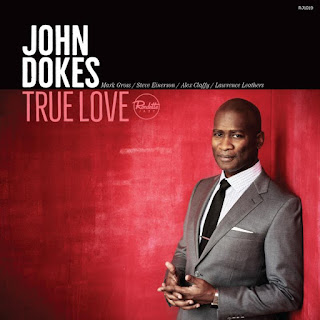Entering their sixth year, chamber trio Sound Underground
returns with their third release Power of Three. While their sophomore effort
Quiet Spaces dwelled reflectively in the intimacy of their unconventional
instrumentation – trumpet, alto saxophone and guitar – Power of Three strives
to shatter the limitations of sonic possibility with these three acoustic
instruments. Across 71 minutes of original music, the trio perseveres to turn
new stones.
Sound Underground, made up of saxophonist David Leon,
trumpeter Alec Aldred and guitarist Jonah Udall, hopes to reflect stories of
life through each track on Power of Three. “The palate of sounds we hear on a
daily basis, the things that often go by unnoticed, we try to include them all
in the music in an effort to achieve a total experience of life through sound,”
Leon explains.
Using a distinctive approach, the album was recorded live
and without isolation, in a single session, which allowed no room for the
trio’s natural intimacy to be compromised. “There’s a deep comfort in knowing
each other as well as we do – the months we’ve spent on the road, the years
living together,” Aldred muses. “We can constantly take risks, really put
ourselves out there, fully knowing the other two will be right there with us no
matter what.” Jonah adds, “We’re definitely a sum that’s greater than its
parts.”
Within this deep cohesion, their raw transparency displays
three compelling personalities that are as different as they are complementary.
All three members are unique composers in their own right, with a share of
credits on the album. But as Udall describes, “every piece really bears each of
our stamp. The music often winds up sounding nothing like what we first brought
in after rehearsing it together and making it our own.”
Power of Three begins with the stark jabs of its title
track, that press forward with a relentlessly joyous momentum. It is the
exemplary expression of their democratic approach to the trio, a kaleidoscope
of three equal voices.
Leon’s “Sun Stealer” takes a dark turn, doling out exacting
mixed meters that navigates with relaxed precision. This makes way for a
trifecta of exploratory ventures into the acoustic possibilities of the guitar.
“I’m fascinated with the physicality of it,” Udall confesses. “It’s really a
percussion instrument, a complex string-drum, and when I look at it that way I
never stop finding new sounds.”
Udall’s “Belltones” follows, blossoming into a harmonic
palate, which Leon and Udall weave together under a heartfelt trumpet solo.
“False Alarm” leaps back with sharp angles, beginning with interlocking horn
flurries and traversing a surprising variety of terrain. It features solos from
each member – a rubato guitar moment, a trumpet showcase, and ending with
ambient saxophone sounds. “Its an anti-solo,” Leon quips. “I’m trying to blend
into the noise that might have happened by accident if we hadn’t been there.”
He continues, “sometimes I just want to sound like a lamppost.”
“Demon Dance” is a fiery tribute to the trio’s love of
Bulgarian folk music, which became a shared passion when they toured Bulgaria
in 2014 and 2015. The melody settles into a simmering alto solo in a
traditional kopanitsa 11/16. This paves the way for the genuine sweetness of
Aldred’s “Feet in the Ground,” which humorously deconstructs a simple melody
with lively horn interplay.
“The Potentialist” begins in open improvisation and finds
its way to a tiptoeing melody and solos by the horn men. Aldred’s “Restful
Rapture” experiments with the trading of winding melodies between all three
instruments, which suddenly downshifts into a heavy, guitar-driven anthem.
An infectious groove takes over on “Smile Back,” which
finishes with a Baroque fugue. It leads into the album’s 11-minute saga “Slow
to Anger, Rich in Kindness,” which journeys from angular pointillistic harmony
through driving power chords into a Meshuggah-inspired bassline, and peaks with
an encounter between Leon and the saxophone. He laughs, “Sometimes I like to
sound like a blender, too.” And through it all, they can’t help but sound only
like themselves.
After that, the album’s single true ballad, Leon’s “By
Myself,” speaks a few statements of its powerful melody. Power of Three
concludes with “Lodore” – Udall’s tribute to “the unassuming power of water”
inspired by the Green River in his fatherland of Utah. Leon channels this power
into a final saxophone eruption.
Based in New York City, Sound Underground is a compact trio
with an expansive imagination. Their inquisitive approach is guided by words of
wisdom from jazz legend Wayne Shorter: "You've got to go down in the
basement and visit every note.” Hailed by JazzTimes as "an inimitable and
profoundly special group sound,” saxophonist David Leon, trumpeter Alec Aldred
and guitarist Jonah Udall draw on a broad array of influences – from Cool Jazz
to 20th century chamber music, to Americana and Balkan folklore – to distill a
unique and personal voice.
The trio’s music emanates the warmth of close friendships.
They hail from far-flung corners of the United States - Udall is from Berkeley,
California, Aldred from Waukesha, Wisconsin, and Leon from Miami, Florida - and
formed in 2013 while living together in Miami, building the personal bonds that
ground their strong musical connection. One can hear it in their performance,
which is infused with the kind of trust that can only be built over years, on
the bandstand and off.
Sound Underground has toured across 13 states on all sides
of the U.S. They have appeared on the Kennedy Center’s Millennium Stage, as
well as at four major international jazz festivals in Mexico, Bulgaria and
Serbia. Their sophomore album Quiet Spaces was selected for Best of Fall 2016
lists by Jazziz Magazine and Bandcamp.com.
















